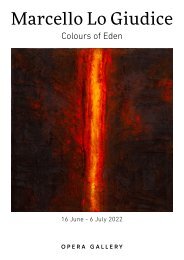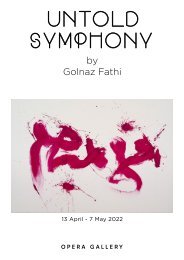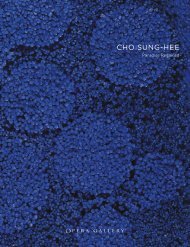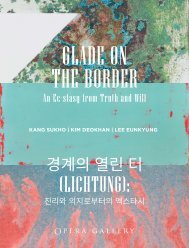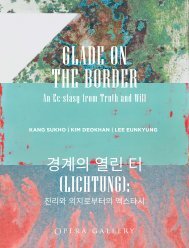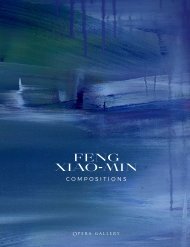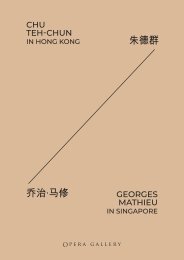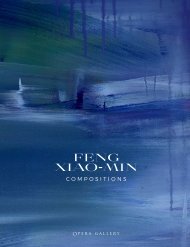FRED EERDEKENS CATALOGUE GENEVE 2018
Create successful ePaper yourself
Turn your PDF publications into a flip-book with our unique Google optimized e-Paper software.
A Slanted Ray of Light<br />
One day, in 1987, while Fred Eerdekens was engraving a copper plate, he noticed that the shadow<br />
made by a rogue twisted metal chip took the shape of a letter on the plate, thus beginning a new<br />
chapter of his artistic career. Since then, his work has been closely linked to metal, shadow,<br />
light and language.<br />
One can recall how Kandinsky incidentally discovered the beauty of abstract form by hanging<br />
one of his paintings upside down in his studio or how Man Ray made his first “rayograph”<br />
thanks to Lee Miller unexpectedly opening the door of his dark room as he was in the process<br />
of developing photos.<br />
In the case of Fred Eerdekens, this random discovery allowed him to crystallise his own story – to<br />
find his own territory – and to develop ties with Belgian artists, in particular with his prominent<br />
predecessors, Magritte and Broodthaers. Both were poets as well as visual artists, and both<br />
explored the limits between reading and seeing, and understanding and discerning. Eerdekens’<br />
work can also be linked to the work of Calder, Tinguely or Boltanski who played each in their<br />
own way, with the shadows created by their sculptures or even closer to our time, to the art of<br />
Markus Raetz, William Kentridge or Tim Noble and Sue Webster.<br />
Eerdekens writes by taking a lengthy detour, thus giving his work a certain edge. Everything lies<br />
in the way the material is twisted. The artist doesn’t sculpt letters, he actually sculpts abstract<br />
undulating or angular forms that once in the light, reveal a word or a sentence. He uses shadow<br />
and light as ink and paper.<br />
Sometimes it is a type of koan, a single word or a short sentence, which meaning spreads in the<br />
space surrounding the object: Big Bang; Cut Out; Mirage; Text and Context, Something of Value; Je<br />
lis, Je dis, Je crois que tout m’échappe… Sometimes it is a simple metal thread which undulates,<br />
sometimes it is a sheet of paper which is folded and cut out, sometimes there are letters floating<br />
on water forming either a string of letters with no apparent meaning, or an explicit expression.<br />
There are also refined installations like the one where a lit candle reveals a word (Icon) and<br />
then another one (Idea) when it is almost totally consumed, reminding the viewer of a famous<br />
vanitas by German painter Gerhard Richter. There are also tridimensional forms which reveal<br />
two distinct shadows when illuminated by two separate sources of light intersecting at a right<br />
angle, emphasizing the inalienable nature between opposite or complementary concepts: God/<br />
Ego or Concept/Content, for example. Somewhere else, the foliage of a tree rustles a strange<br />
whisper: Mhmmmhm. A crystal ball reads L’Ombre du Vide (the shadow of emptiness) and<br />
the shadows made by a pile of cut-out cereal, cookie and pasta boxes divulge the words Holy<br />
Spirit/Come Home. Picture this, appears by means of a small tree, comparable to a silverpoint<br />
planted in a piece of wood.<br />
A theater of shadows, magic lantern… In positive or in negative, recessed, outlined or transparent,<br />
the word is in the object, only appearing thanks to a slanted ray of light.<br />
David Rosenberg<br />
Paris, September <strong>2018</strong><br />
7






